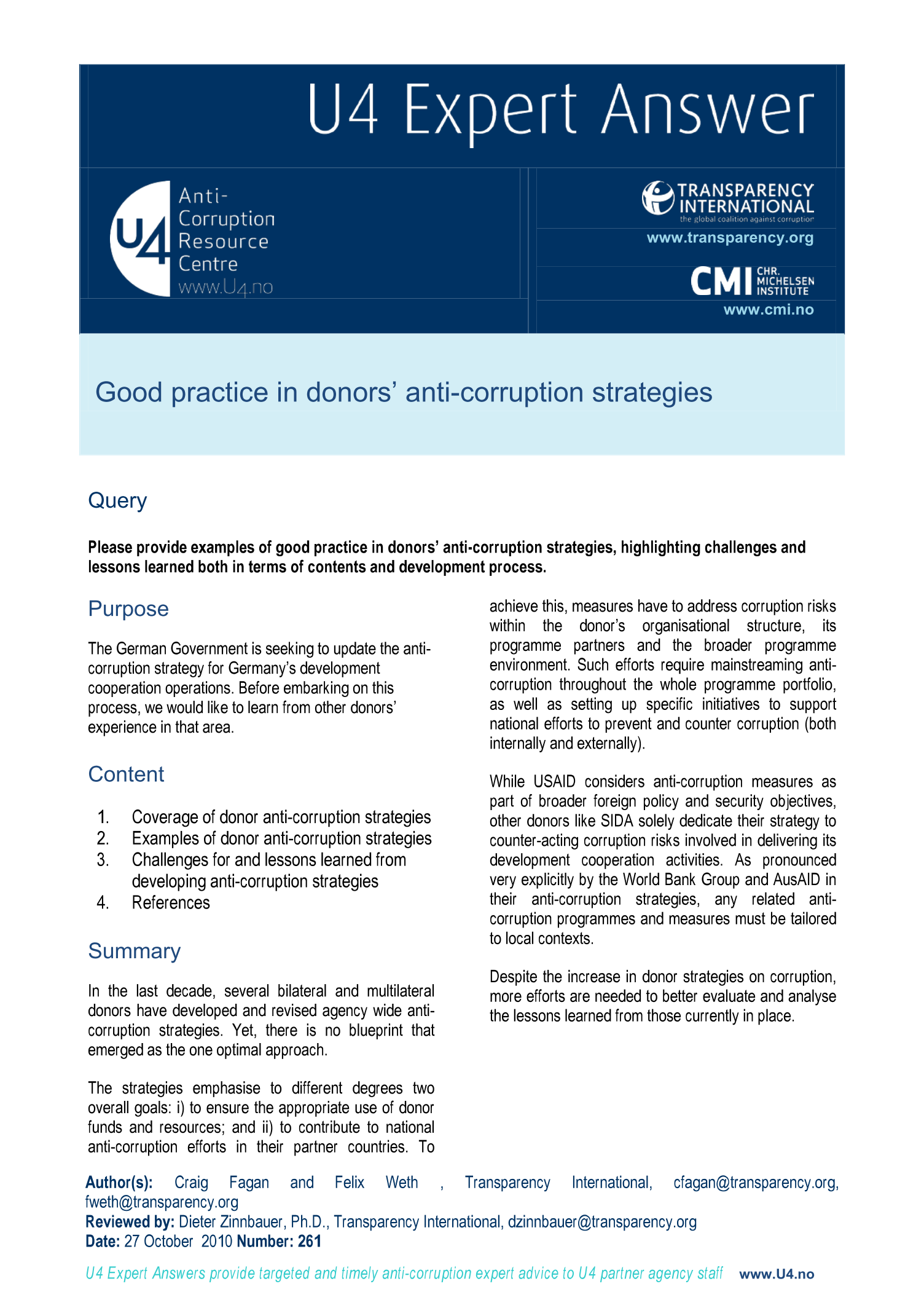U4 Helpdesk Answer
Good practice in donors’ anti-corruption strategies
In the last decade, several bilateral and multilateral donors have developed and revised agency wide anti-corruption strategies. Yet, there is no blueprint that emerged as the one optimal approach. The strategies emphasise to different degrees two overall goals: i) to ensure the appropriate use of donor funds and resources; and ii) to contribute to national anti-corruption efforts in their partner countries. To achieve this, measures have to address corruption risks within the donor’s organisational structure, its programme partners and the broader programme environment. Such efforts require mainstreaming anti-corruption throughout the whole programme portfolio, as well as setting up specific initiatives to support national efforts to prevent and counter corruption (both internally and externally). While USAID considers anti-corruption measures as part of broader foreign policy and security objectives, other donors like SIDA solely dedicate their strategy to counter-acting corrupti

Cite this publication
(2010) Good practice in donors’ anti-corruption strategies. Bergen: U4 Anti-Corruption Resource Centre, Chr. Michelsen Institute (U4 Helpdesk Answer null)
Disclaimer
All views in this text are the author(s)’, and may differ from the U4 partner agencies’ policies.
This work is licenced under a Creative Commons Attribution-NonCommercial-NoDerivatives 4.0 International licence (CC BY-NC-ND 4.0)